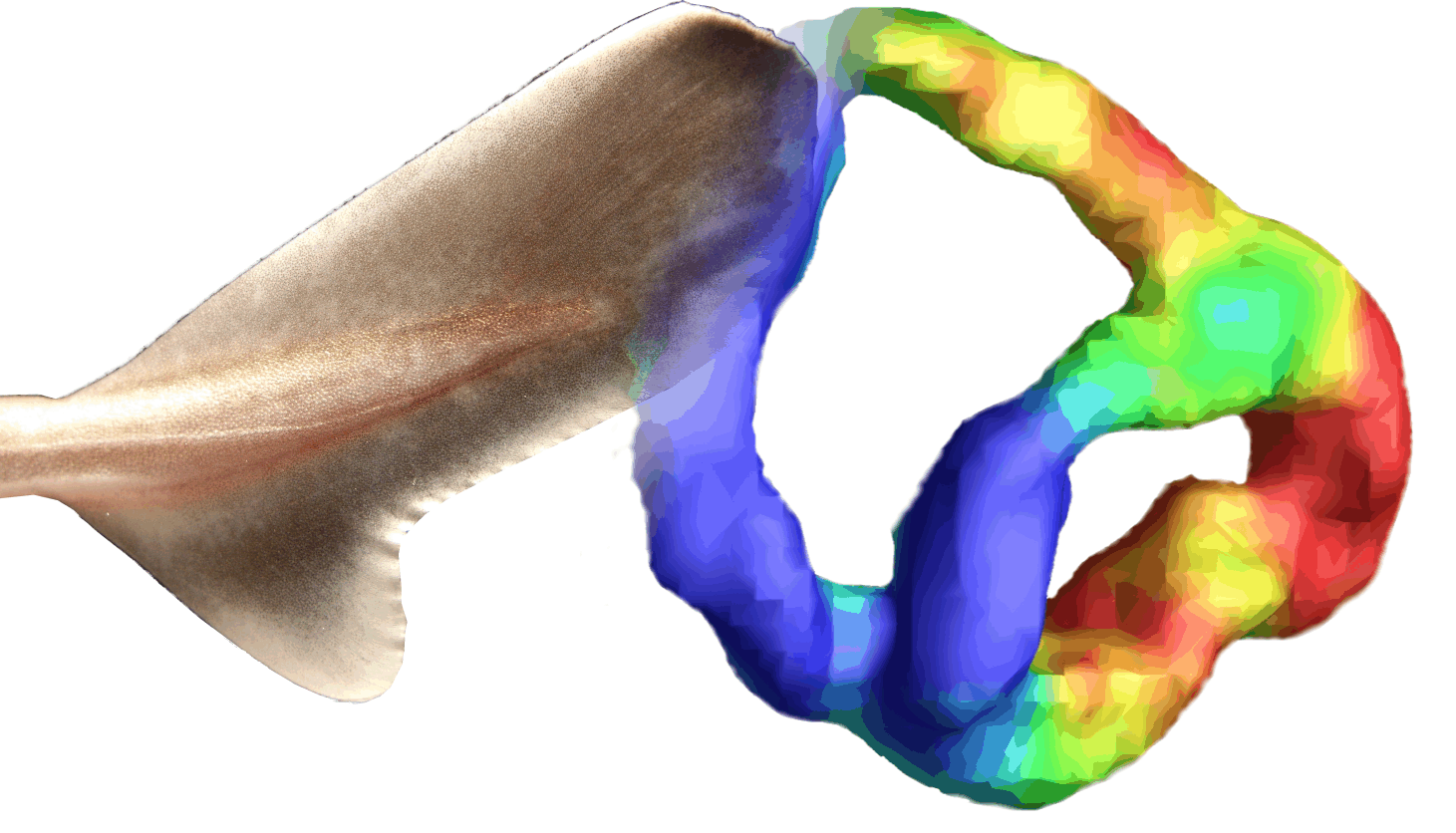
Organismal-Environmental Interactions & Volumetric Fluid Dynamics
Using a 3-dimensional approach to fluid dynamics, allows us to see complex volumetric interaction effects of multiple body parts - something that can't be accomplished in standard planar particle image velocimetry.

Denticle orientation circulates flow in shark nostrils
Webber-Schultz et al. 2025. Who nose what flows: Shark narial denticle morphology and hydrodynamic implications. Integrative & Comparative Biology. icb/icaf104

A change in tail stiffness allows sharks to generate continuous thrust
Flammang et al. 2011. Volumetric imaging of shark tail hydrodynamics reveals a three-dimensional dual-ring vortex wake structure. Proceedings of the Royal Society B 278(1725):3670-3678. PDF, Movie S1, Movie S2, add'l Video

Crayfish use their swimmerets to amplify escape propulsion
Hunyadi et al. 2020. Morphology, performance, and fluid dynamics of the crayfish escape response. Journal of Experimental Biology 223(15): jeb.219873. Featured in Inside JEB

We found significant flow interactions among fish fins
Flammang et al. 2011. Volumetric imaging of fish locomotion. Biology Letters 7:695-698. PDF, Supplement

Carp have a unique filtration method to maximize food intake
Cohen et al. 2018. Channeling vorticity: Modeling the filter-feeding mechanism in silver carp using µCT and 3D PIV. Journal of Experimental Biology 221 jeb183350. PDF JEB Outstanding Paper Prize shortlist
Press
National Geographic's When Sharks Attack
Dr. Flammang on season 5, episode 5
Dan Rather Reports - March 2013
Interview with Dr. Flammang
Science podcast - 2 Dec 2011
Discovery Channel - 30 Nov 2011
"Daily Planet" interview with Dr. Flammang